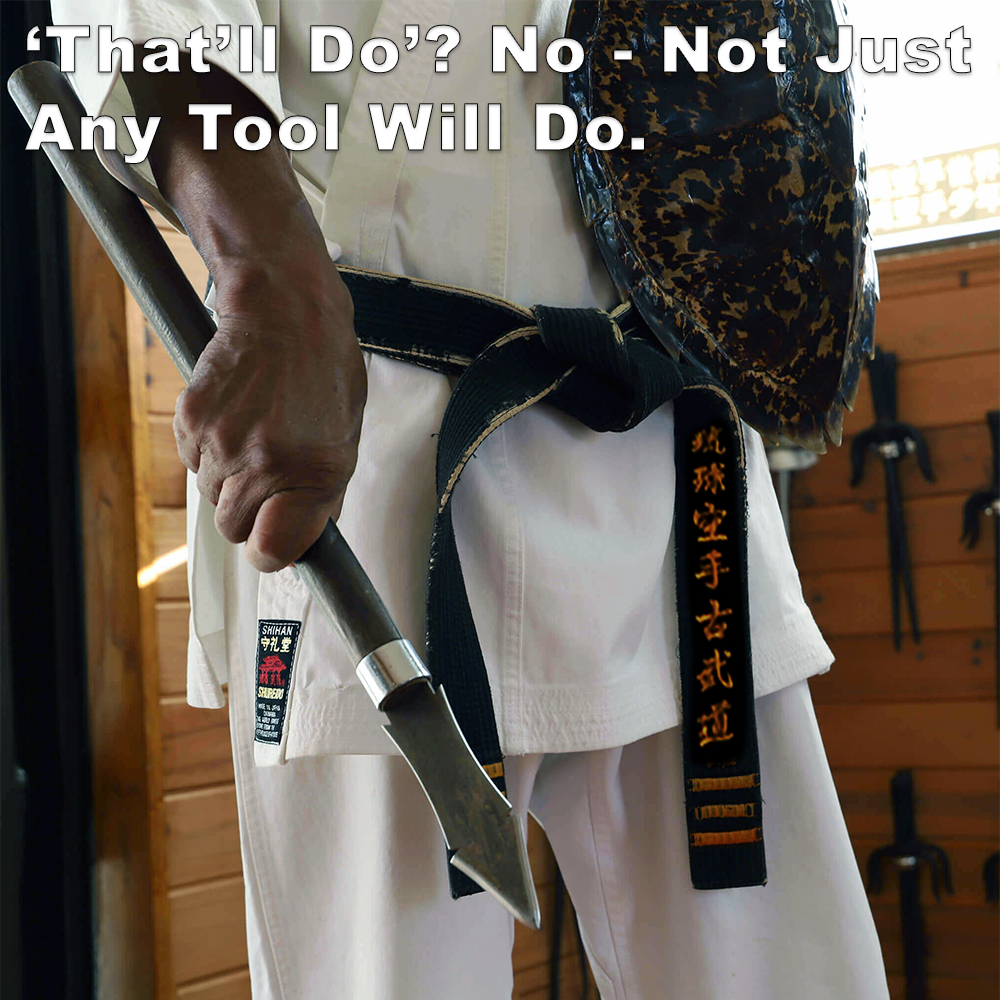
(Approx 2 minute 15 second read)
Maybe it’s just me, but I’ve never liked the attitude of “that’ll do”.
.
To me, it says “I can’t be bothered” – and that speaks volumes. I’ve always believed in doing things right the first time, or at least giving your best effort. You won’t always succeed, but if trying your best isn’t important to you, why bother at all?
.
It’s like having the right tool for the job. I’m pretty handy – fixing, creating, taking things apart and putting them back together – but I won’t even start unless I’ve got the tools to do it properly. Bodging it, as we say in the UK, just isn’t for me. Do it right – or don’t do it at all.
.
Karate’s no different. I often hear people say it’s fine to teach beginners things that aren’t practical – they’ll learn the “real stuff” later. But why? If you know something only works in the dojo environment, why make it the foundation of someone’s training?
.
Letting people repeat bad habits only to “correct” them later makes no sense to me. You can simplify a technique for beginners without teaching it wrong.
.
Would you teach a child only the first few letters of the alphabet because they’re easier, and ignore V, W, X, Y, and Z until they’re older? Of course not. You teach the whole thing – just at the right level.
.
This is one of the reasons karate is often seen as ineffective – because a lot of the time, it is.
.
Heresy? Not at all. When was the last time you were attacked with a stepping oi-zuki or gyaku-zuki from six feet away? Yet these kinds of attacks are drilled in dojos all over the world in some kind of step-kumite.
.
Is it about showing commitment? Courage? Timing?
.
But let’s be honest – the kind of timing and distancing you develop from defending against a choreographed lunge has little to do with a real encounter.
.
That type of movement only makes sense in the dojo, under controlled conditions. It becomes a kind of theatre, where both partners play a role.
.
And that’s fine – if you acknowledge it for what it is. These methods may help teach rhythm, distance, and form, but only within that narrow context.
.
If you’re training for sport, for performance, for tradition – that’s a valid choice.
.
I don’t mind competition. I don’t mind tournaments. As long as it’s clear that this is the context you’re working within. Sport has its own rules, its own timing, and its own logic. Train accordingly.
.
The problem is when people mistake this kind of training for combative readiness. When they believe they’re learning self-defense – but all they’re really doing is rehearsing choreography. That’s when we have to ask the hard question: what is it for?
.
Some will tell me I’m wrong – that it teaches fundamentals, and those can later be adapted. But training that isn’t grounded in function builds habits that are hard to break. Timing, distance, structure – they only have meaning if the situation they’re built on is real.
.
So I ask again – what’s it really for?
.
Because in the end, “that’ll do” just won’t do. Not in self-defense. Not in teaching. Not in life. Do it right – or don’t do it at all.
.
.
Written by Adam Carter
.
.
Image courtesy of Japan Sports Agency
